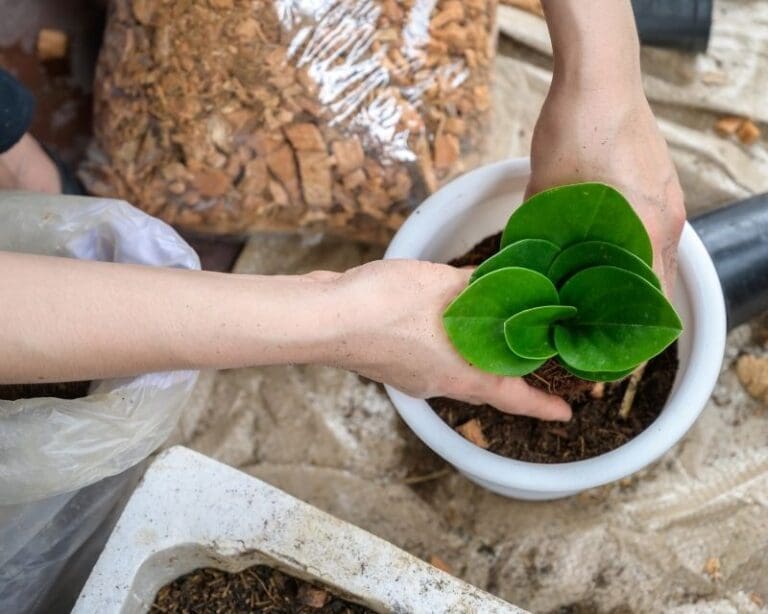Do Snake Plants Like To Be Root Bound? (+When To Repot)
Snake plants are sturdy plants that can grow petty big if the conditions are set right. Some people often beleive that keeping their snake plant in a smaller pot where they remain root bounded will encourage better growth. But how true is that? Do snake plants like to be root bound? Let’s find out!
Snake plants prefer smaller pots where its root can hold the soil well. However, if the roots have grown densely and displaced most of the soil, leaving behind nothing but roots ball, then your plant is likely to suffer. You must repot your snake plant immediately if the plant is root bounded.
While your snake plant might have done well in its pot, it will outgrow and needs to be repotted.
Keeping a plant in a small pot will result in slow growth and poor health, as the plant’s roots don’t have enough space to grow.
But how will you know when is the right time to repot your snake plant, and what are the ways to fix a root bounded snake plant? Let’s learn all about it in detail.
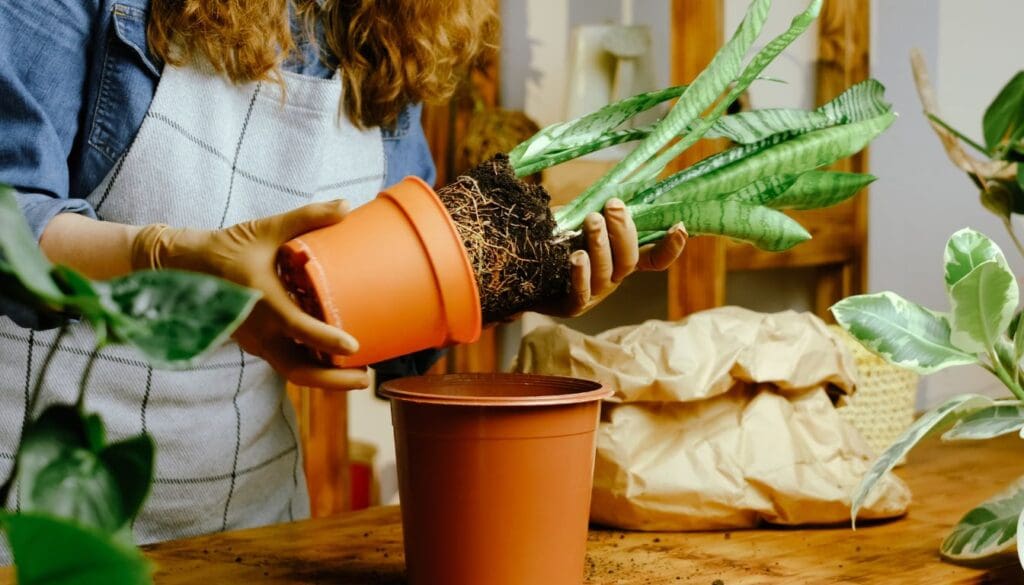
Please note: Simplify Plants is reader-supported. Some links in the post are affiliate links and I get a commission from purchases made through links in the post.
Can snake plants be root bound?
The snake plant should not be left root bounded as it can affect the growth of the plant. In fact, you should not keep any plant in a smaller sized pot because it restricts the growth of the roots. Let us understand this in layman’s term.
When a plant is planted in the ground, it has all the space to expand its root and grow. The plant is likely to develop a solid root structure that supports its large size.
However, when we restrict a plant to a pot, it has a limited amount of soil, nutrients, and space to grow. What happens when the plant fills the current pot completely?
- The roots of the plant will displace the soil leaving behind dense root ball.
- The plant is likely to run out of space to expand its root structure.
- The pressure of the root is likely to break the pot.
During this entire process, the plant is deprived of nutrients and water. As the soil is displaced and there is not enough medium to hold, the water and the nutrients quickly flows through.
The plant doesn’t get the opportunity to absorb any of it. As a result, the plant is likely to remain thirsty and deprived of nutrients. This is the perfect recipe for disaster.
If you act quickly, your snake plant will likely die, and it might be difficult to save them.
Do snake plants like small pots?

Snake plants have a shallow root structure, so you don’t need a deep pot. However, that doesn’t mean you can keep them in a small pot.
The plant roots need enough space to expand, or there is a risk of root problems and the plant being root-bound.
Apart from that, the snake plant also grows pretty tall, so if the pot is too small, it is likely to tip over. Thus, it is crucial to choose the right size pot for your snake plant.
How to tell if snake plant is root bound?
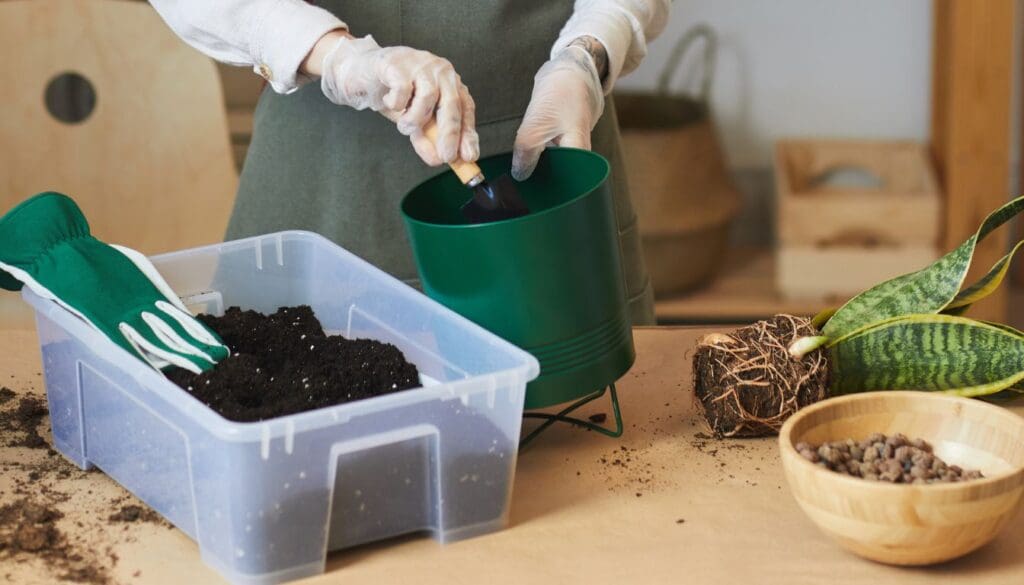
There are two ways to check if your snake plant is root bounded or not. These include:
- Look for visual cues
- Examine the root ball of your snake plant by taking it out of the pot.
The first and foremost sign that our snake plants are root bounded will be some visual cues that our plant gives us:
- Dehydrated plant
- Soil dries up quickly
- Water drains out too quick
- Droopy leaves
- No new growth
- Yellowing of leaves
- Roots spiraling all around the pot
If you see any of these signs and cannot find any reasonable cause, then your snake plant is likely root-bound.
To investigate further, you need to check the roots of the snake plant. To do so, you can follow these simple steps:
- Lay the container on its side
- Try to take the plant out but do not apply any force.
- Use a long thin serrated knife and run it around the soil’s edges to loosen it up.
- Gently slide the plant out once the soil loosens up
- Once your plant is out, examine the root ball for signs of possible problems.
If the root of your snake plant is all tangled up densely and takes the shape of the pot leaving behind little to no soil in the pot, then your snake plant is indeed root-bound.
| Root Condition | Status |
|---|---|
| Root just began wrapping around the root ball | Slightly root bounded |
| Roots started forming mats around the root ball | Root bounded |
| Roots have formed a solid mat and no soil can be seen | Severely root bounded |
If your snake plant is severely root bounded, then it needs to be repotted soon. Else you need to make the right call.
How to fix a root-bound snake plant?

Once you have identified that your snake plant has become root-bound, you have two options.
- Repot your snake plant
- Divide your snake plant
Although repotting is the preferred way, some people also go by dividing their snake plant. This way, they can repot the plant in the same size pot and have two plants simultaneously.
So, let’s dive into the details of each of these methods.
Repotting a snake plant

Repotting your snake plant is one of the most obvious solutions, especially when your plant is root-bound.
When you move your snake plant to a larger pot, it will provide the plant with more space to grow its roots.
The additional space will also be filled with fresh soil, which will provide nutrients and water to your plant.
The process is really easy and straightforward:
- Choose an appropriate size container.
- Take the plant to a sink or table and lay the pot on its side.
- Try to remove the plant slowly.
- Once the plant is out, get rid of old soil, if any.
- Inspect for root damage and clip off the damaged part.
- Fill the new container with fresh potting mix up to 1/3 of the pot.
- Plant your snake plant in and fill with the soil from all sides.
Once done, you can rest your mind in peace for a few years. Snake plants usually don’t need frequent repotting.
Dividing a snake plant

Sometimes dividing the snake plant into two halves is a better option. It gives you two plants, and you can keep them in the same size pot.
I had done this once when I didn’t want to keep a larger size pot at my work desk.
Here are the steps you need to take to divide snake plant:
- It is crucial to water your snake plant thoroughly a day or two before splitting. It will loosen up the soil.
- Take the plant out of the pot and place it on a flat surface.
- Use a sterile knife or clippers to divide the roots and stems.
- Carefully try to separate the roots and plants into two or three equal halves and prepare to repot them in separate containers.
- Fill the new container with a potting mix and repot your plants.
- Water the plant after repotting to reduce the stress.
Once done, you can place them in a bright spot where they get enough light to grow and proliferate.
How do I know when to repot my snake plant?
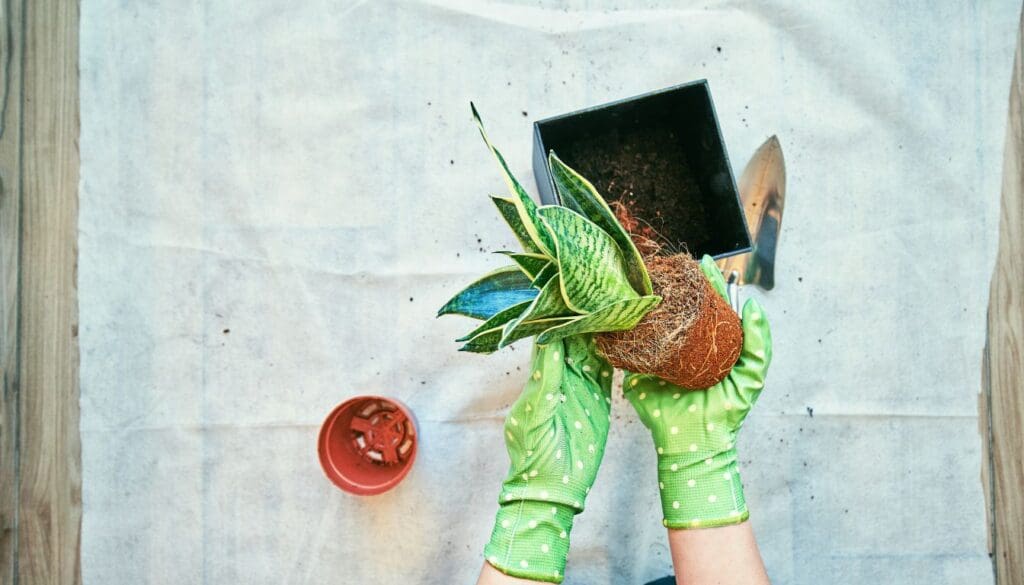
It is recommended to repot your snake plant every 3-4 years. Snake plant has a shallow root structure, so they can easily last for a few years in their pot.
You shouldn’t repot your plant frequently as the plant’s root will take time to establish, which will hinder its growth.
If your snake plant shows the signs of being root bound, then you might have to consider repotting them sooner.
It is also recommended to repot your snake plant during spring or early summer as they lie in the dormant stage during the winter.
Best soil and pot for snake plant
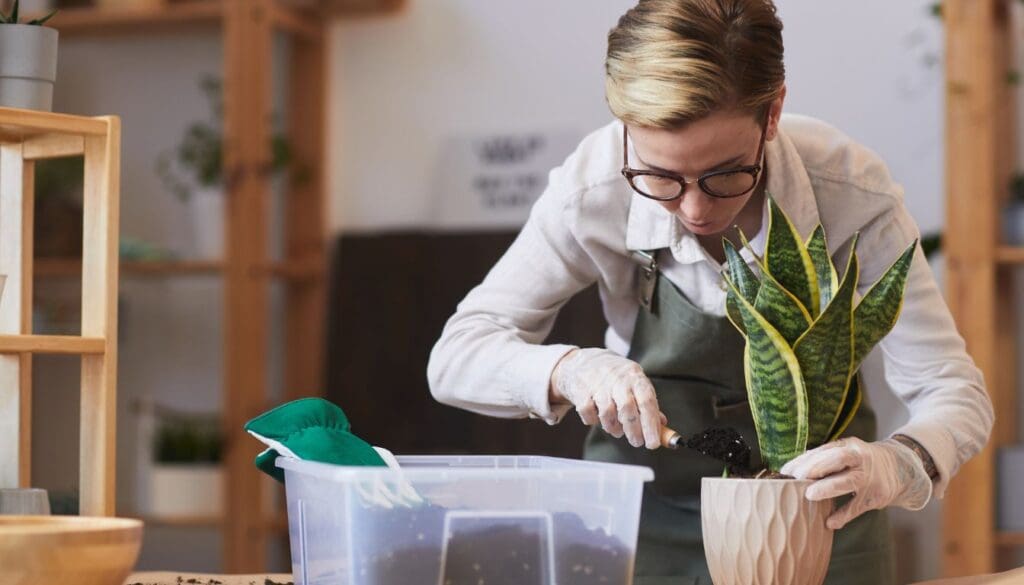
Choosing an appropriate size pot for your snake plant is crucial for its growth. You should not go with too big of a pot as well; it will directly impact the plant’s growth.
A rule of thumb is to go with a pot one size larger than the current one. If your snake plant is currently potted in a 4″ pot, then go with a 6″ pot.
Anything bigger than that could be a problem as the roots may take longer to get established. As snake plant prefers dry soil, ceramic and terracotta planters will be an ideal choice.
Avoid plastic and metal planters if possible as you may end up overwatering them, which will lead to various issues.
If you are looking for some suitable container picks for your snake plant, you can try any of these planter boxes from ETSY.
Providing an appropriate soil mix is equally essential for the growth of your snake plant. The soil must be well-drained and nutrient-rich at the same time. You can create a soil mix by mixing:
- 3/4 part of organic potting soil (I usually go with Miracle Grow Indoor potting mix)
- 1/4 part of succulent soil mix (Try this cactus soil)
- A handful of compost
This soil mix will provide appropriate nutrients to your snake plant but will take care of the aeration and drainage as well.
Final Thoughts

Whether your snake plant needs to be repotted anytime soon or not will depend upon your plant’s growth.
If your plant has growth profoundly displacing the soil and leaving only roots in the pot, then you might need to repot your snake plant soon.
However, if your plant still has enough space to grow, then you can let them be in the pot for a few years as well.
Yes, snake plant indeed prefers smaller pots as their roots are shallow. But that doesn’t mean the plant cannot become root-bound.
You need to inspect your plant and decide whether you want to repot them today or let them sit for a while.
In any case, you shouldn’t let the plant be root bound as it will impact the plant’s overall growth and health.
Source: The University of Arkansas Division of Agriculture, Snake plant profile.
Recommended Garden Supplies
| Product Image | Our Recommended Gardening Supplies | Check Offers! |
|---|---|---|
Top Top
Top
Top
Top
Top
Top
Top
Top | rePotme Houseplant and Tropical Classic Potting Soil Mix | Check Offer On Amazon |
 Top
Top
Top
Top
Top
Top
Top
Top | Espoma Organic Indoor Plant Food | Check Offer On Amazon |
 Top
Top
Top
Top
Top
Top
Top
Top | GooingTop LED Grow Light 6000K Full Spectrum Clip Plant Growing Lamp | Check Offer On Amazon |
 Top
Top
Top
Top
Top
Top
Top
Top | Soil Moisture Meter | Check Offer On Amazon |
 Top
Top
Top
Top
Top
Top
Top
Top | Govee Hygrometer Thermometer, Bluetooth Enabled! | Check Offer On Amazon |
 Top
Top | LEVOIT Humidifiers for Large Room(Best For Plants) | Check Offer On Amazon |
 Top
Top
Top
Top
Top
Top
Top
Top | Upgraded DIY Automatic Drip Irrigation Kit, 15 Potted Houseplants Support | Check Offer On Amazon |
 Top
Top
Top
Top
Top
Top
Top
Top | Stainless Steel Heavy Duty Gardening Tool Set | Check Offer On Amazon |
 Top
Top
Top
Top
Top
Top
Top
Top | Bonide Insecticidal Soap | Check Offer On Amazon |
 Top
Top
Top
Top
Top
Top
Top
Top | Bonide 32 oz Spray Neem Oil for Organic Gardening | Check Offer On Amazon |
 Top
Top
Top
Top
Top
Top
Top
Top | Garden Safe Fungicide | Check Offer On Amazon |



